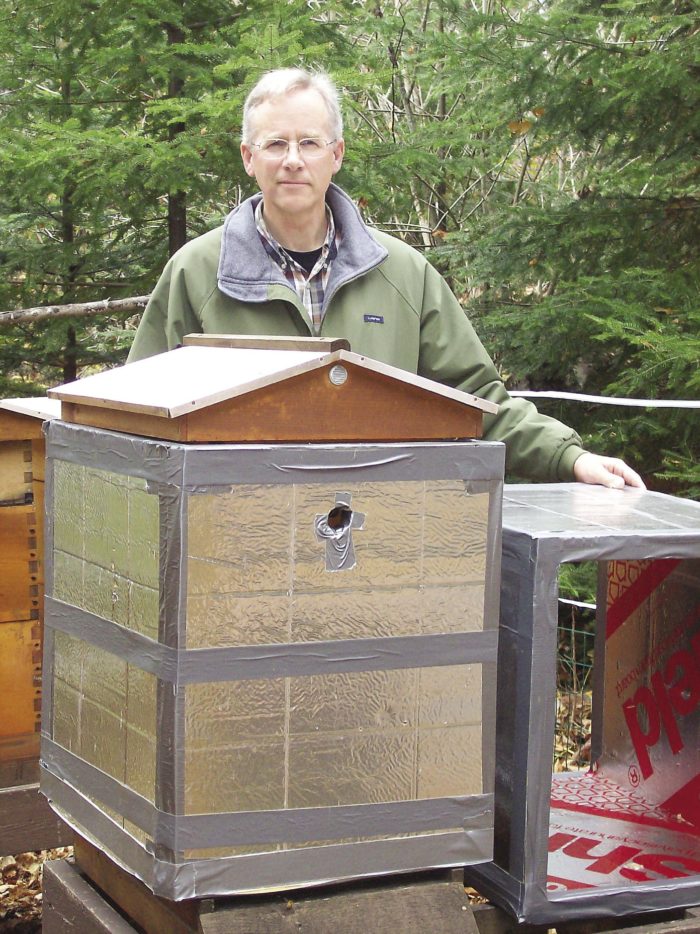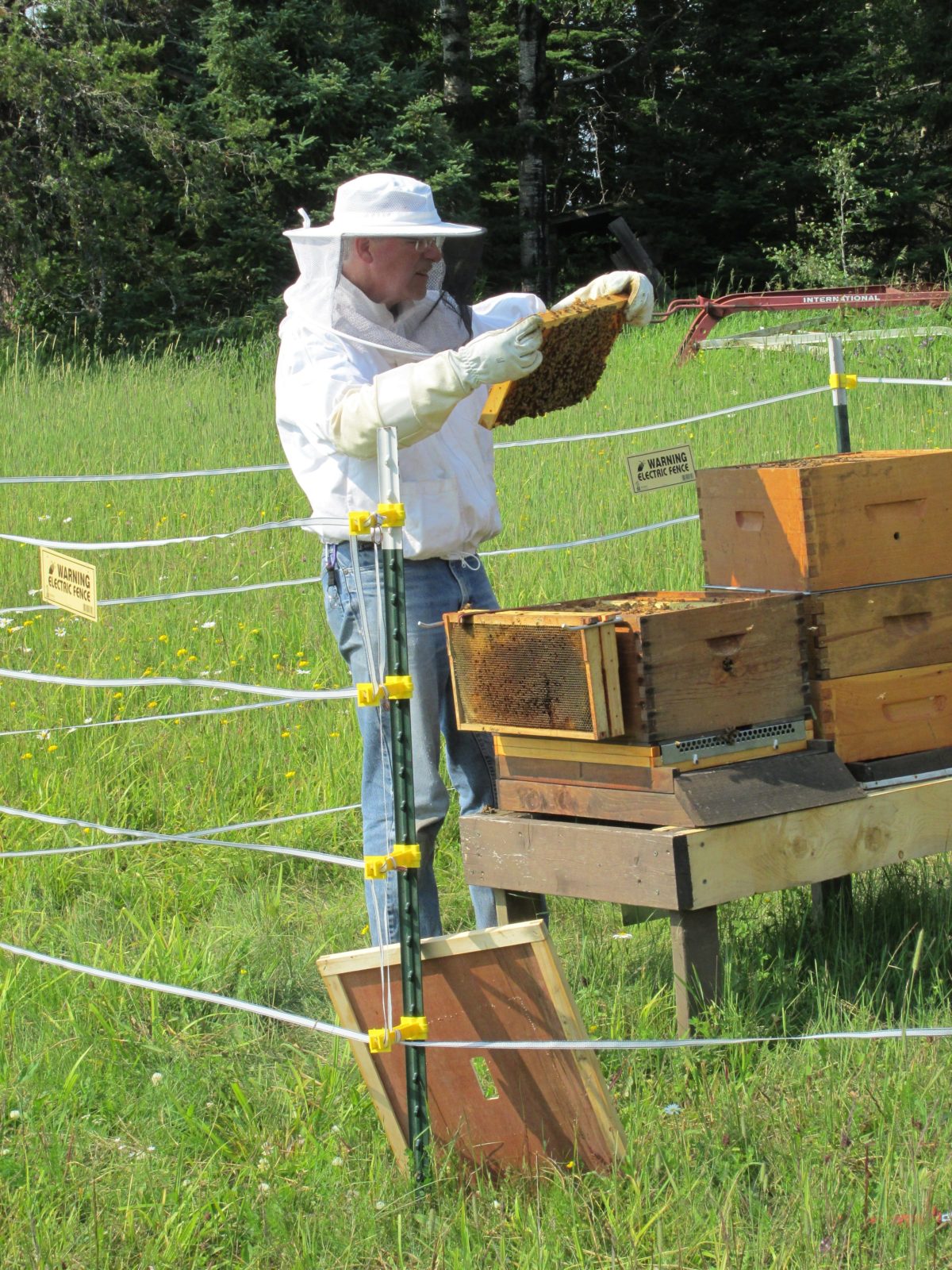Pollinators, such as bees, are necessary for maintaining a healthy ecosystem. A majority of the crops that people rely on for food are pollinated by bees, and they can help promote better growth in flower gardens. People have kept honey bees domestically for thousands of years, drawn to their many benefits including beeswax and honey. Many people along Lake Superior’s North Shore keep honey bees, including Grand Marais resident Mark Ditmanson. Ditmanson is a member of the North Shore Hobby Beekeepers, a group based out of Cook County, Minnesota that began with a handful of beekeeping members and has now grown to around 15 people.

“I’ve been keeping bees for the last 14 years,” said Ditmanson. “A friend encouraged me to get started. Around that time there was a big concern for pollinators. I got my first bees from local beekeepers and have been keeping bees ever since.”
Honey bees aren’t native to North America. They arrived with European settlement, and as bees naturally escape and start new hives, they’ve now spread across the continent and are kept throughout the U.S. and Canada. Although the Northland doesn’t have wild honey bees due to the harsh winters, they do well domestically and are great at pollinating local gardens.
“There are hives scattered all over Grand Marais, MN as well as outside of town,” Ditmanson said. “Anyone living in Grand Marais will see honey bees visiting their flowers—that’s grown over the last several years as more people have started beekeeping.”
For those just getting started with beekeeping, a first consideration is where and how to house them. A single hive can contain over 30,000 honey bees. While different beekeepers have different ways of housing their bees, Mark Ditmanson uses a kind of hive called a Langstroth hive, which has frames that slide in and out where the bees build their honeycombs. This design makes it easy for beekeepers to check whether the hive is healthy, whether it’s producing honey, and whether the queen bee is laying enough eggs.
Once a beekeeper finds suitable hives and gets their first bees, the work involved in keeping them varies throughout the year. In the winter, the hives have to be insulated to protect them from the harsh weather, and in the spring, beekeepers feed the hives with sugar. Some other tasks include keeping hives protected from hungry bears and watching for swarms in early summer.

Bee swarms occur when a new queen hatches. The new queen will leave the hive with a large portion of the worker bees to start a new colony. Typically, a swarm of honey bees will try to find a hollow tree to use for a new hive. But since there aren’t hollow trees in this area that honey bees need, a swarm will die if the beekeeper doesn’t catch them.
“Swarming bees are docile,” said Ditmanson. “They have a lot of honey and are focused on following the queen. When bees swarm on a tree branch, you can climb and cut off the branch with the swarm, and put them in a new box. The bees will follow the queen down into a new box since they’re following her smell.”
While honey production may seem like the primary reason to keep domestic bees, beekeepers in the Northland don’t always collect a lot of honey. “We get some honey up here, depending on how close your hives are to meadows and blossoms,” said Ditmanson. “The boreal forest doesn’t have blossoms, and since bees will only fly three miles to get food, whether or not you’ll get honey from your bees is very location-dependent.”
Despite that, Ditmanson said that beekeeping is a very rewarding practice. “Part of the joy is learning about the bees. I’ve seen them do their waggle dance, heard the queens give signals, and smelled their alarm smell. The more you learn about bees, the more you can respond to them. You learn to respect their space so they’ll want to stay. And since bees are so dependent on their surroundings, you become much more in-tuned to nature’s rhythms and are more aware of your own surroundings.”
How you can help the bees:
While bees are an important part of our environment, they also face threats such as loss of habitat and the widespread use of pesticides that weaken and disorient bees. Some ways people can help include planting bee-friendly flowers grown in natural soil and encouraging nurseries to grow plants in pesticide-free soil (pesticides in soil can make it into a flower’s nectar and harm bees). Any effort to help our pollinators helps to support a healthy and balanced ecosystem.




